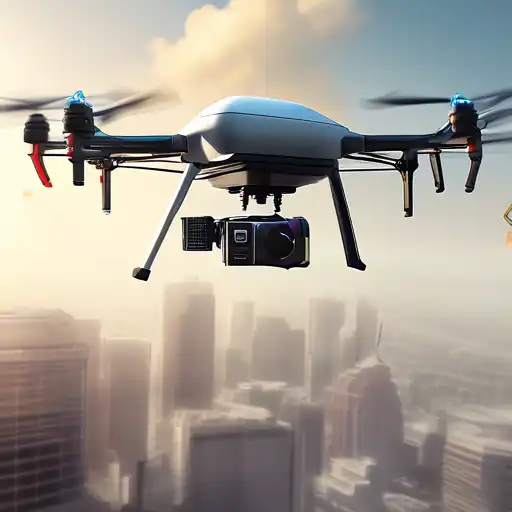Introduction to Commercial Drones
Commercial drones, also known as unmanned aerial vehicles (UAVs), have revolutionized various industries by offering innovative solutions to traditional challenges. From agriculture to real estate, the applications of drones are vast and varied. This article delves into the opportunities presented by commercial drones and the regulatory framework governing their use.
Opportunities Unleashed by Commercial Drones
The advent of commercial drones has opened up a plethora of opportunities across multiple sectors. Here are some of the key areas where drones are making a significant impact:
- Agriculture: Drones are used for crop monitoring, spraying pesticides, and assessing land conditions, leading to increased efficiency and reduced costs.
- Construction and Real Estate: Aerial photography and surveying capabilities of drones provide unique perspectives for property showcases and site inspections.
- Delivery Services: Companies are experimenting with drones for delivering packages, promising faster and more eco-friendly delivery options.
- Emergency Response: Drones play a crucial role in search and rescue operations, providing real-time data in inaccessible areas.
Navigating the Regulatory Landscape
While the opportunities are immense, the use of commercial drones is subject to stringent regulations to ensure safety and privacy. Key regulatory considerations include:
- Registration and Licensing: Operators may need to register their drones and obtain necessary licenses depending on the jurisdiction.
- No-Fly Zones: Certain areas, such as near airports or government buildings, are designated as no-fly zones to prevent interference with manned aircraft and ensure security.
- Privacy Laws: The use of drones for surveillance or data collection is regulated to protect individuals' privacy rights.
- Insurance Requirements: Operators may be required to have liability insurance to cover potential damages caused by drone operations.
Future Prospects and Challenges
The commercial drone industry is poised for exponential growth, with advancements in technology paving the way for more sophisticated applications. However, challenges such as airspace congestion, privacy concerns, and the need for standardized regulations across borders remain. Addressing these issues is crucial for the sustainable development of the drone industry.
Conclusion
Commercial drones offer transformative opportunities across various sectors, but their potential can only be fully realized within a clear and supportive regulatory framework. As the industry evolves, stakeholders must work together to balance innovation with safety and privacy concerns. For more insights into the latest drone technologies, check out our technology section.
